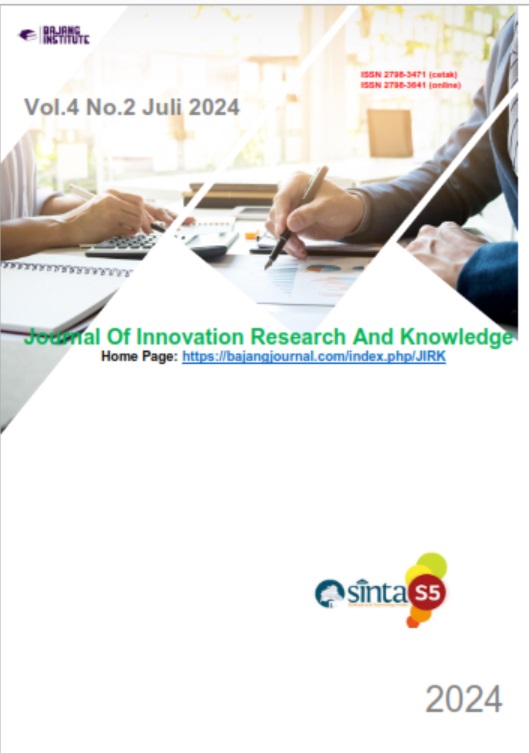SURVEI RISIKO KESEHATAN KERJA PETUGAS GIZI DI RUMAH SAKIT ISLAM KABUPATEN KARAWANG
DOI:
https://doi.org/10.53625/jirk.v4i2.8731Keywords:
Occupational Safety, Nutrition Staff, Occupational Health Risks, Work-Related Stress, Ergonomics, Chemical Exposure, Hospital, Public HealthAbstract
Occupational health risks among nutrition staff in hospitals are often overlooked in occupational health and safety (OHS) policies that tend to focus more on medical personnel. This study aims to identify and evaluate the occupational health risks faced by nutrition staff at the Islamic Hospital of Karawang Regency and provide recommendations for more effective risk mitigation. The research approach used is a quantitative descriptive method with a cross-sectional design. Data collection was carried out through a survey using structured questionnaires distributed to all nutrition staff working at the hospital. The study results indicate that the most significant occupational health risk is work-related stress (30%), followed by chemical exposure (25%), poor ergonomics (20%), biological exposure (15%), and physical hazards (10%). The high risk of work-related stress is caused by excessive workloads, lack of management support, and strict service demands. Chemical exposure, such as from detergents and disinfectants, can cause skin irritation, respiratory problems, and other health issues. Poor ergonomics related to inappropriate working positions and unsuitable equipment use leads to musculoskeletal disorders, such as back pain. Biological exposure can result from inadequate hygiene standards and unsafe food handling, while physical hazards include injuries from unsafe kitchen equipment. This study recommends comprehensive interventions to reduce occupational health risks, including regular training on stress management and safe chemical use, improving the work environment to be more ergonomic, and strengthening hygiene standards. Implementing a more inclusive and data-driven OHS policy can improve the well-being of nutrition staff, which, in turn, will enhance the quality of healthcare services in the hospital. This aligns with findings that "comprehensive and evidence-based occupational safety policies can improve service quality and worker satisfaction" (Robinson & Griffiths, 2017).
References
Adi, R. (2020). Kondisi Psikososial di Tempat Kerja dan Dampaknya terhadap Kesejahteraan Mental Tenaga Kesehatan. Disertasi. Universitas Indonesia: Jakarta.
Azwar, S. (2013). Reliabilitas dan Validitas dalam Penelitian Kesehatan. Yogyakarta: Pustaka Pelajar.
Beaglehole, R., Bonita, R., & Kjellström, T. (2011). Basic Epidemiology (2nd ed.). Geneva: World Health Organization.
Beauchamp, T.L., & Childress, J.F. (2019). Principles of Biomedical Ethics (8th ed.). New York: Oxford University Press.
Dawson, D., & Reid, K. (1997). Fatigue, Alcohol and Performance Impairment. Nature, 388(6639), 235.
Geller, E. S. (2001). The Psychology of Safety Handbook. Boca Raton: CRC Press.
Hidayat, R. (2019). Strategi Pengurangan Stres Kerja pada Tenaga Kesehatan di Fasilitas Pelayanan Kesehatan. Disertasi. Universitas Gadjah Mada: Yogyakarta.
Hughes, P., & Ferrett, E. (2011). Introduction to Health and Safety at Work: The Handbook for the NEBOSH National General Certificate. London: Routledge.
International Labour Organization (ILO). (2019). Safety and Health at the Heart of the Future of Work: Building on 100 Years of Experience. Geneva: ILO.
Luthfi, M. (2021). Manajemen Risiko Proaktif dalam Menjaga Kesehatan dan Keselamatan Pekerja di Sektor Kesehatan. Disertasi. Universitas Airlangga: Surabaya.
Murti, B. (2018). Desain dan Ukuran Sampel untuk Penelitian Kuantitatif di Bidang Kesehatan. Yogyakarta: Gadjah Mada University Press.
Notoatmodjo, S. (2012). Metodologi Penelitian Kesehatan. Jakarta: Rineka Cipta.
Prasetya, I. (2019). Peningkatan Ergonomi Kerja dalam Mengurangi Risiko Musculoskeletal Disorders (MSDs) di Rumah Sakit. Disertasi. Universitas Padjadjaran: Bandung.
Purwanto, H. (2019). Administrasi Rumah Sakit: Manajemen Risiko dan Keselamatan Kerja. Surabaya: Universitas Airlangga.
Rahmawati, S. (2020). Keselamatan dan Kesehatan Kerja pada Pekerja Non-Medis di Fasilitas Pelayanan Kesehatan. Disertasi. Universitas Gadjah Mada: Yogyakarta.
Reason, J. (1997). Managing the Risks of Organizational Accidents. Aldershot: Ashgate Publishing.
Robinson, A., & Griffiths, P. (2017). Workplace Health and Safety: Effective Policies for Improved Outcomes. Journal of Occupational Health, 15(4), 243-258.
Sari, D. (2020). Paparan Bahan Kimia di Tempat Kerja dan Pengaruhnya terhadap Kesehatan Tenaga Kesehatan. Disertasi. Universitas Airlangga: Surabaya.
Setiawan, A. (2019). Metode Pengambilan Sampel Total dalam Penelitian Kesehatan. Jakarta: EGC.
Siregar, M. (2021). Keselamatan Kerja di Puskesmas: Penilaian Risiko dan Kebijakan Mitigasi. Disertasi. Universitas Indonesia: Jakarta.
Sugiharto, D. (2018). Kepemimpinan dan Budaya Keselamatan Kerja di Rumah Sakit. Disertasi. Universitas Gadjah Mada: Yogyakarta.
Sugiyono. (2016). Metode Penelitian Kuantitatif, Kualitatif, dan R&D. Bandung: Alfabeta.
Widodo, A. (2018). Implementasi Program Kesehatan Kerja dalam Mengurangi Absensi dan Biaya Operasional Rumah Sakit. Disertasi. Universitas Padjadjaran: Bandung.
Widowati, R. (2020). Pentingnya Data Empiris dalam Kebijakan Kesehatan Kerja Rumah Sakit. Disertasi. Universitas Padjadjaran: Bandung.
World Health Organization (WHO). (2022). Health and Safety in the Workplace: A Comprehensive Guide for Health Professionals. Geneva: WHO.
Yoder-Wise, P. S. (2014). Leading and Managing in Nursing. St. Louis: Mosby.
Zohar, D. (2002). Modifying Supervisory Practices to Improve Subunit Safety: A Leadership-Based Intervention Model. Journal of Applied Psychology, 87(1), 156-163.













